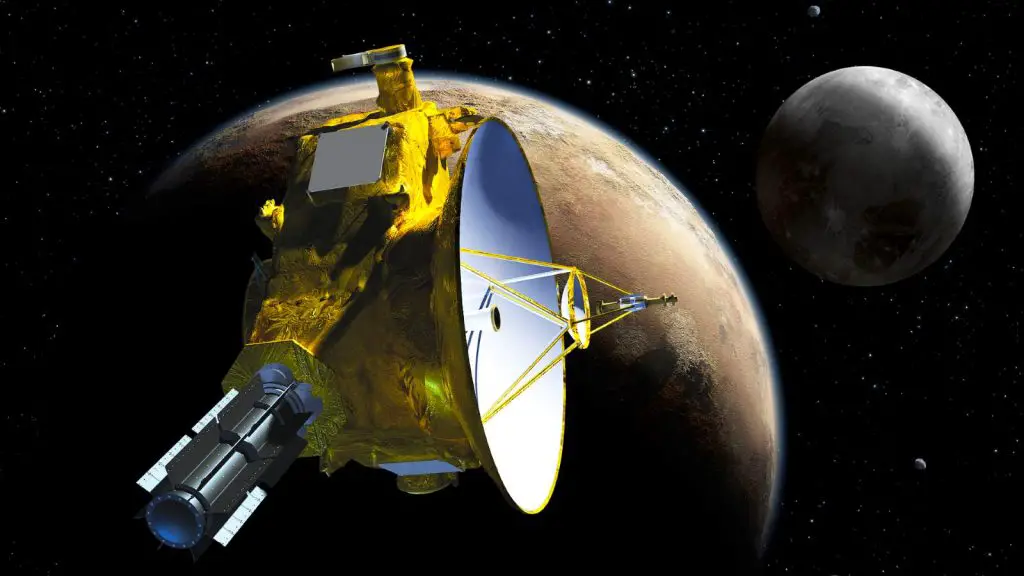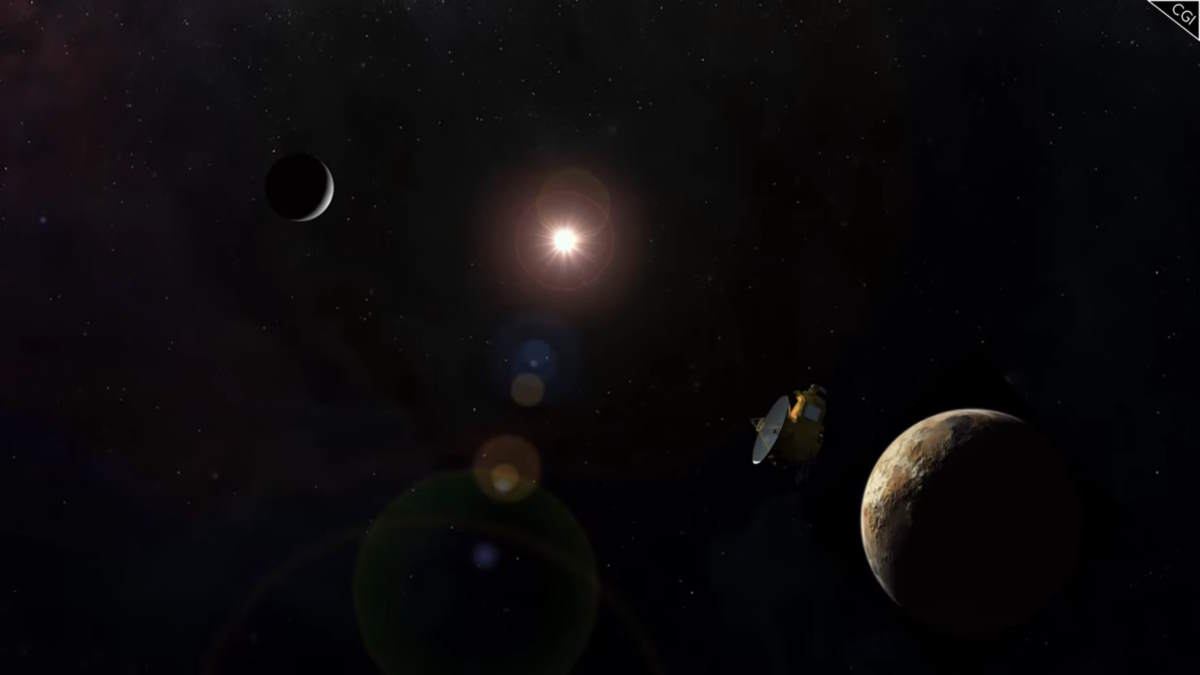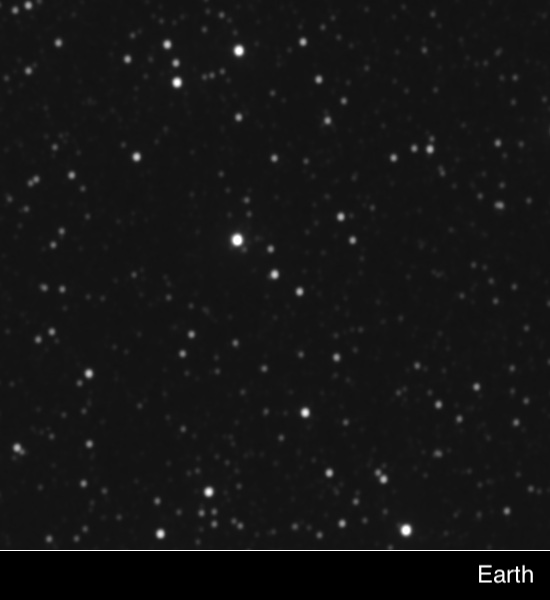Google product developer Clay Bavor created a gif putting the Boeing 747 and SR-71 aircraft speeds into perspective compared to NASA’s New Horizons spacecraft. So you can have an idea of the speed of the New Horizons spacecraft, which performed a flyby study of the Pluto system in 2015. Spoiler: it’s fast!
NASA’s New Horizons probe started its fantastic voyage of exploration on January 19, 2006, aboard an Atlas V rocket. directly into an Earth-and-solar-escape trajectory with a speed of about 16.26 km/s (10.10 mi/s; 58,500 km/h; 36,400 mph). It was the fastest human-made object ever launched from Earth.
It swung past Jupiter for a gravity boost and scientific studies in February 2007 which increased New Horizons’ speed, and conducted a six-month-long reconnaissance flyby study of Pluto and its moons in summer 2015, culminating with Pluto’s closest approach on July 14, 2015.
However, New Horizons is not the fastest spacecraft to leave the Solar System. As of January 2018, this record is held by Voyager 1, traveling at 16.985 km/s (61,146 km/h; 37,994 mph) relative to the Sun. Voyager 1 attained greater hyperbolic excess velocity than New Horizons thanks to gravity assists by both Jupiter and Saturn.
New Horizons flew 12,500 km (7,800 mi) above the surface of Pluto, making it the first spacecraft to explore the dwarf planet.
After completing Pluto flyby, it made a total of four trajectory changes in October and November 2015 to place itself on a course towards 486958 Arrokoth (formerly known as Ultima Thule), a trans-Neptunian object located in the Kuiper belt.
The 486958 Arrokoth flyby occurred on January 1, 2019, when the spacecraft was 43.4 AU from the Sun.
The farthest object ever explored is slowly revealing its secrets, as scientists piece together the puzzles of 486958 Arrokoth (formerly known as Ultima Thule) – the Kuiper Belt object NASA’s New Horizons spacecraft flew past on New Year’s Day, four billion miles from Earth.
The Kuiper Belt stretches from about 30 (the orbit of Neptune) to about 55 astronomical units (AU) from the Sun. It is similar to the asteroid belt, which is located roughly between the orbits of the planets Mars and Jupiter but is far larger- 20 times as wide and 20 to 200 times as massive. Like the asteroid belt, it consists mainly of small bodies or remnants from when the Solar System formed.

Sources
- New Horizons on Wikipedia
- Where is New Horizons? – NASA’s Mission to Pluto and the Kuiper Belt on pluto.jhuapl.edu
- New Horizons mission page on the NASA website
- “How Fast is New Horizons Moving? This Gif Will Show You.” on Futurism
- How Many Elephants are Left in the World in 2025? - August 17, 2025
- Moon Landings: All-Time List [1966-2025] - February 2, 2025
- What Is Max-Q and Why Is It Important During Rocket Launches? - January 16, 2025

